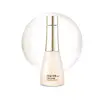What's inside
What's inside
 Key Ingredients
Key Ingredients

 Benefits
Benefits

 Concerns
Concerns

 Ingredients Side-by-side
Ingredients Side-by-side

Water
Skin ConditioningGlycerin
HumectantDipropylene Glycol
HumectantTriethylhexanoin
MaskingButylene Glycol
HumectantAbies Alba Seed Extract
Antimicrobial1,2-Hexanediol
Skin ConditioningDimethicone
EmollientLactarius Hatsudake Fruiting Body Extract
EmollientMaltodextrin
AbsorbentLactobacillus/Ampelocissus Martini Fruit/Lavender Flower/Rosa Canina Fruit/Rosemary Leaf/Sage Leaf/Thyme Leaf Extract Ferment Filtrate
Skin ConditioningLactobacillus
Skin ConditioningBeta-Glucan
Skin ConditioningPanthenol
Skin ConditioningBetaine
HumectantGlycosyl Trehalose
Emulsion StabilisingCitrus Aurantifolia Oil
CleansingRosmarinus Officinalis Leaf Oil
MaskingVitis Vinifera Leaf Oil
MaskingHydrogenated Starch Hydrolysate
HumectantSqualane
EmollientDipentaerythrityl Hexa C5-9 Acid Esters
Skin ConditioningPropylene Glycol
HumectantSodium Acrylate/Hydroxyethyl Acrylamide Copolymer
Acrolein/Acrylic Acid Copolymer
AntimicrobialCarbomer
Emulsion StabilisingAcrylates/C10-30 Alkyl Acrylate Crosspolymer
Emulsion StabilisingTromethamine
BufferingTrisodium EDTA
Mica
Cosmetic ColorantTitanium Dioxide
Cosmetic ColorantCI 77491
Cosmetic ColorantPolysorbate 60
EmulsifyingLimonene
PerfumingWater, Glycerin, Dipropylene Glycol, Triethylhexanoin, Butylene Glycol, Abies Alba Seed Extract, 1,2-Hexanediol, Dimethicone, Lactarius Hatsudake Fruiting Body Extract, Maltodextrin, Lactobacillus/Ampelocissus Martini Fruit/Lavender Flower/Rosa Canina Fruit/Rosemary Leaf/Sage Leaf/Thyme Leaf Extract Ferment Filtrate, Lactobacillus, Beta-Glucan, Panthenol, Betaine, Glycosyl Trehalose, Citrus Aurantifolia Oil, Rosmarinus Officinalis Leaf Oil, Vitis Vinifera Leaf Oil, Hydrogenated Starch Hydrolysate, Squalane, Dipentaerythrityl Hexa C5-9 Acid Esters, Propylene Glycol, Sodium Acrylate/Hydroxyethyl Acrylamide Copolymer, Acrolein/Acrylic Acid Copolymer, Carbomer, Acrylates/C10-30 Alkyl Acrylate Crosspolymer, Tromethamine, Trisodium EDTA, Mica, Titanium Dioxide, CI 77491, Polysorbate 60, Limonene
Water
Skin ConditioningGlycerin
HumectantPropanediol
SolventMethyl Gluceth-20
HumectantPolyglycerin-3
HumectantDipropylene Glycol
HumectantArbutin
AntioxidantBacillus/Soybean Ferment Extract
Skin ConditioningPPG-13-Decyltetradeceth-24
Emulsifying1,2-Hexanediol
Skin ConditioningXanthan Gum
EmulsifyingParfum
MaskingDisodium EDTA
Adenosine
Skin ConditioningEthylhexylglycerin
Skin ConditioningHydroxypropyl Cyclodextrin
MaskingIngredients Explained
These ingredients are found in both products.
Ingredients higher up in an ingredient list are typically present in a larger amount.
1,2-Hexanediol is a synthetic liquid and another multi-functional powerhouse.
It is a:
- Humectant, drawing moisture into the skin
- Emollient, helping to soften skin
- Solvent, dispersing and stabilizing formulas
- Preservative booster, enhancing the antimicrobial activity of other preservatives
Dipropylene Glycol is a synthetically created humectant, stabilizer, and solvent.
This ingredient helps:
Dipropylene glycol is technically an alcohol, but it belongs to the glycol family (often considered part of the ‘good’ alcohols). This means it is hydrating and gentle on skin unlike drying solvent alcohols like denatured alcohol.
As a masking agent, Dipropylene Glycol can be used to cover the smell of other ingredients. However, it does not have a scent.
Studies show Dipropylene Glycol is considered safe to use in skincare.
Learn more about Dipropylene GlycolGlycerin is already naturally found in your skin. It helps moisturize and protect your skin.
A study from 2016 found glycerin to be more effective as a humectant than AHAs and hyaluronic acid.
As a humectant, it helps the skin stay hydrated by pulling moisture to your skin. The low molecular weight of glycerin allows it to pull moisture into the deeper layers of your skin.
Hydrated skin improves your skin barrier; Your skin barrier helps protect against irritants and bacteria.
Glycerin has also been found to have antimicrobial and antiviral properties. Due to these properties, glycerin is often used in wound and burn treatments.
In cosmetics, glycerin is usually derived from plants such as soybean or palm. However, it can also be sourced from animals, such as tallow or animal fat.
This ingredient is organic, colorless, odorless, and non-toxic.
Glycerin is the name for this ingredient in American English. British English uses Glycerol/Glycerine.
Learn more about GlycerinWater. It's the most common cosmetic ingredient of all. You'll usually see it at the top of ingredient lists, meaning that it makes up the largest part of the product.
So why is it so popular? Water most often acts as a solvent - this means that it helps dissolve other ingredients into the formulation.
You'll also recognize water as that liquid we all need to stay alive. If you see this, drink a glass of water. Stay hydrated!
Learn more about Water